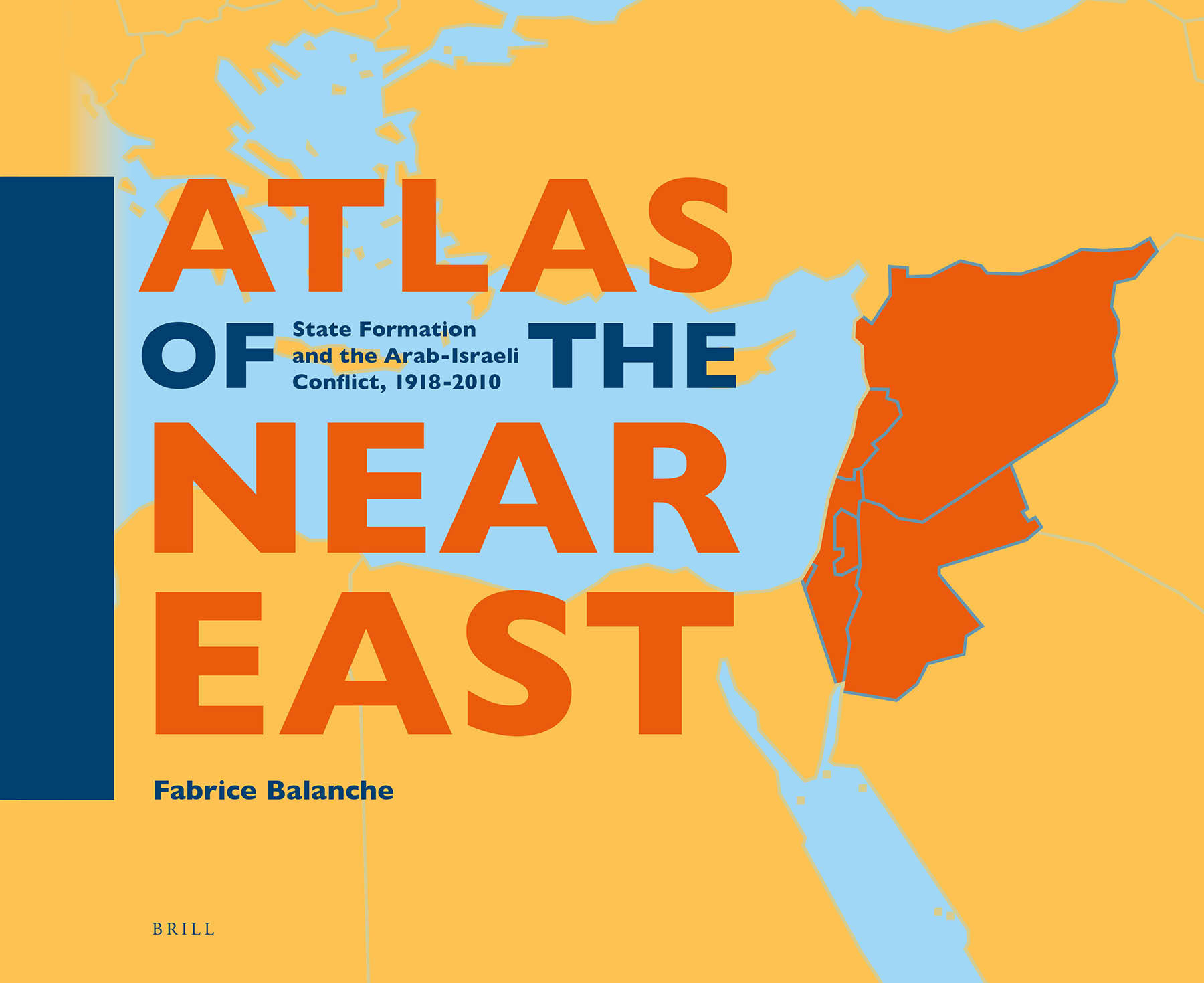Rashomonic Rhapsodies in the Near East
Fabrice Balanche. 2017.
Atlas of the Near East: State Formation and the Arab-Israeli Conflict, 1918-2010
Leiden and Boston: Brill
ISBN 9789004344297
The Near East or Middle East, and especially the Israeli–Arab conflict, is rashomonic to its core, a web of contradictory narratives that are, more often than not, mutually exclusive. Too many justified claims populate the area – too many for a peaceful understanding and certainly too many to do justice to in one book. It would, therefore, be an easy task to show that the author of this highly instructive atlas favours one narrative over another, is biased towards one actor, did not consider this or neglected that, etc. However, this would just display a misunderstanding of what the author aspired to do and even what a project like this atlas is capable of. Maps are intellectual tools, which allow us to see connections we have not previously considered and bring to light the internal logic of a narrative, as Franco Moretti in his seminal Atlas of the European Novel (Verso, 1998) reminds us. So, what is the internal logic of the narrative presented by this author? It is one of a geopolitical area hamstrung by environmental factors like aridity and, due to the scarcity of resources, demographics. Population movement, migration, the urban–rural divide and consequent demographic pressure, have played and continue to play, according to the atlas, a decisive role in state formation in the Near East and the Israeli–Arab conflict. Since the atlas was already complete in 2011 and was first published (in French) in 2012, more recent developments (the civil war in Syria and subsequent waves of refugees heading to neighbouring countries and beyond, the rise and fall of ISIS, and re-emergence of the Kurdish question, to name but a few), which have transformed the region, are not featured in the atlas. This is unfortunate but not surprising and certainly not the author's fault. The Near East has been, for most of the 20th and 21st centuries, in a state of flux, and any publication going beyond a historical analysis but aspiring to depict the present is almost doomed to be overtaken by events. However, this hardly diminishes the value of the work, especially the section on Syrian nation building, which offers key insights into the still raging civil war. As such, the atlas can contribute to our understanding of recent developments, even if it does not cover them.
A handy teaching tool
Furthermore, this is a beautifully designed book, multicoloured eye candy, even though its steep price will limit its wider distribution. The maps are, for the most part, beautifully executed, illuminating and rich in detail. There is much to discover here. Plus, for historians of the Near (or Middle) East, many of the maps would come in handy as teaching tools. The accompanying texts generally provide succinct information, allowing a newcomer to understand the context of the maps. Personally, I learnt a lot about environmental factors in the history of the region, many of which shine a fascinating new light on a wide array of contexts and caused me to reconsider foregone conclusions, especially regarding recent migration trends in the Near East. The atlas does a stellar job in highlighting the implications and ramifications for a large number of idiosyncratic contexts. However, the original French title, Atlas du Proche-Orient arabe, is much closer to its scope. While the Israeli–Arab conflict is sufficiently represented to justify its prominence in the English title of the atlas, it is striking that the atlas falls short on the Israeli side.

The place of Israeli space
Even aside from the question of the web of narratives that form a mental map of the Near Atlas, it is notable and regrettable that Israel is only featured as a part of the hyphenated conflict. In the same vein, Zionism is here only featured as a foil, and the author is not interested in its history and different currents. Unsurprisingly, the author, more often than not, returns to quotes from Theodor Herzl to explain recent Israeli politics, a historically myopic choice. Furthermore, by separating Israel from the rest of the Near East according to its pre-’67 borders, referring to the Golan Heights as the Alsace-Lorraine of Syria, the author reinforces the notion of the Israeli state being a European spearhead, somehow separate from its Near Eastern surroundings. Yet, for various reasons, it can hardly be denied that the state of Israel forms an intrinsic part of the Near East. At one point, the author almost concedes this much when he writes that “even if the Palestinians are not living in symbiosis with the Israelis, the Palestinian space is subject to the political, economic and military influence of Israel”(p.88). Then is the same not true for Israeli space, which is subject to the influence of its Near Eastern neighbours? Where is the place of the Israeli space, one wonders. Must Israel not be seen as part of the Near East – maybe even more so today than a couple of decades ago? That Israel – its politics, economy, military, culture, and society, and, yes, its space – are deeply intertwined with the Arab Near East is indubitable. By not acknowledging this fact, an opportunity is missed in my view.
However, these objections do little to reduce the overall value of the atlas, whose practical achievements are beyond doubt. The author is to be lauded for having crafted a comprehensive and smart tool, which will help to understand a region whose competing narratives often conceal its multilayered history and ever-changing present.
Sebastian Musch, University of Osnabrück, Germany